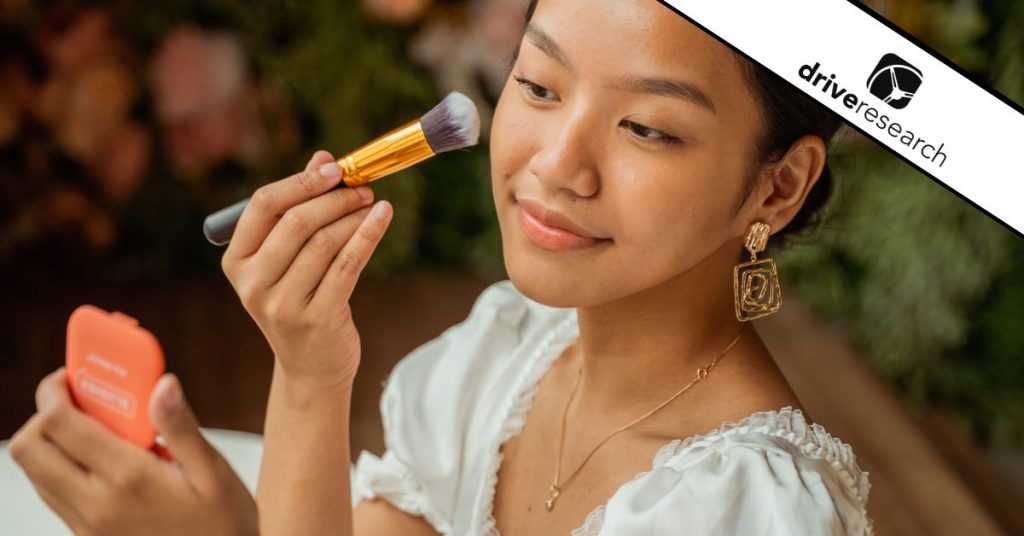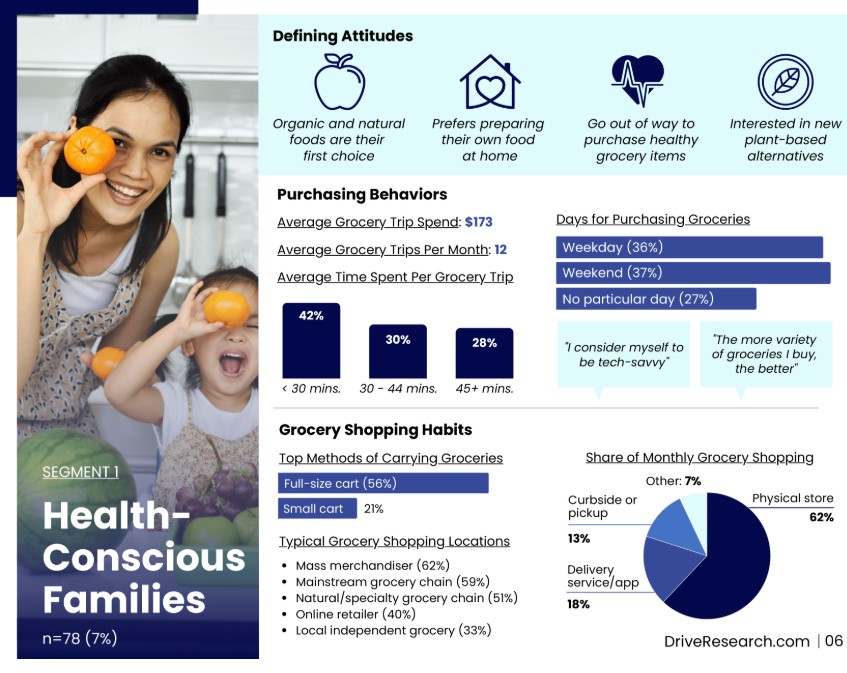
In the ever-evolving beauty industry, staying ahead of trends and understanding consumer preferences is key to success.
Conducting thorough beauty market research is essential for businesses looking to innovate, differentiate, and thrive in this competitive landscape.
In this blog post, we’ll delve into the intricacies of conducting effective beauty market research, exploring methodologies, insights, and strategies used by our market research experts.
What is Beauty Market Research?
Beauty market research involves the systematic gathering, analysis, and interpretation of data related to consumer preferences, trends, behaviors, and attitudes within the beauty industry.
It encompasses a variety of methodologies such as surveys, focus groups, interviews, and data analysis.
In our experience, the objectives and goals of beauty brands conducting market research vary.
The most common areas include understanding consumer needs, perceptions, and desires regarding cosmetics, skincare, haircare, fragrance, and other beauty products.
Overall, beauty market research aims to identify emerging trends, evaluate the effectiveness of marketing strategies, assess product performance, and inform decision-making processes for beauty brands, retailers, and stakeholders.
Doing so ultimately shapes the development and positioning of products and services within the competitive beauty marketplace.
Benefits of Conducting Beauty Market Research
Conducting beauty market research offers numerous benefits for businesses operating in the beauty and cosmetics industry.
Here are some key advantages:
- Understanding Consumer Preferences: Market research helps businesses gain insights into consumer preferences, buying behaviors, and trends. This understanding allows companies to tailor their products to meet the specific needs and desires of their target audience.
- Identifying Trends: Beauty trends can change rapidly. Market research helps brands stay ahead by identifying emerging trends and staying informed about shifts in consumer preferences. This information is crucial for developing and launching new products that align with current market demands.
- Competitive Analysis: By researching the beauty market, companies can assess the competitive landscape. Understanding the strengths and weaknesses of competitors, as well as their product offerings and marketing strategies, allows businesses to position themselves effectively and identify areas for differentiation.
- Product Development: Consumer feedback obtained through market research can guide product development. Businesses can learn what features, formulations, or innovations are most appealing to their target audience, ensuring that new products have a better chance of success in the market.
- Price Optimization: Understanding the price sensitivity of consumers and the pricing strategies of competitors is essential for setting optimal price points. Market research helps businesses determine the right balance between perceived value and competitive pricing to maximize profitability.
- Brand Loyalty and Customer Satisfaction: By gathering feedback on existing products and customer experiences, businesses can enhance customer satisfaction and build brand loyalty. Satisfied customers are more likely to become repeat buyers and brand advocates.
Types of Beauty Market Research
Beauty market research encompasses various types of studies and methodologies aimed at understanding consumer preferences, market trends, and industry dynamics.
Here are some common types of beauty market research:
Consumer Surveys
Surveys are a popular method for gathering quantitative data on consumer preferences, purchasing behaviors, brand perceptions, and product satisfaction.
Surveys can be conducted online, through phone interviews, or in person, and they provide valuable insights into consumer demographics, trends, and preferences.
Focus Groups
Focus groups involve bringing together a small group of individuals representative of the target market to discuss specific beauty-related topics.
Through moderated discussions and interactive exercises, focus groups provide qualitative insights into consumer perceptions, attitudes, and motivations.
They can help businesses understand the emotional drivers behind purchasing decisions and gather feedback on product concepts or marketing campaigns.
In-Depth Interviews
In-depth interviews involve one-on-one discussions with consumers or industry experts to delve deeply into specific topics related to beauty products, trends, or behaviors.
These interviews allow researchers to explore nuanced insights, uncover underlying motivations, and gather detailed feedback on product prototypes or marketing strategies.
Market Segmentation Studies
Market segmentation involves dividing the target market into distinct groups based on demographic, psychographic, or behavioral characteristics.
Through segmentation analysis, businesses can identify key consumer segments with unique needs, preferences, and purchasing behaviors, allowing for more targeted marketing strategies and product offerings.
Take for example a customer segmentation study we ran with grocery shoppers across the U.S.

Product Testing and Concept Testing
Product testing involves gathering feedback from consumers through controlled trials or sampling programs to evaluate the performance, efficacy, and acceptability of beauty products.
Concept testing assesses consumer reactions to new product ideas, packaging designs, or marketing concepts before they are launched in the market, helping businesses refine their offerings and minimize the risk of failure.
Beauty Market Research Case Study
Finding success in the highly competitive beauty industry is becoming increasingly difficult as consumers continue to evolve. Beauty market research is helpful in understanding target consumers and measuring the effectiveness of advertising.
Conducting market research for beauty products answers key questions before launching an advertising campaign including:
- Wondering what ad makes customers most likely to try your product or service?
- Wondering what offer is most appealing to customers?
- Wondering what resonates with customers after they see an ad?
These insights help take the guesswork out of knowing what ads will or will not resonate with target consumers.
Better yet, ad effectiveness research improves advertising return on investment (ROI) by collecting customer feedback BEFORE a campaign is created. This saves time, money, and resources.
Our market research company recently partnered with a nation’s leading beauty retailer to conduct advertising effectiveness research. Learn more about the objectives, approach, and results of beauty market research.
Objectives of the Beauty Market Research
A beauty retailer prepared a series of ads and offers to test in an online survey to help the team obtain quantitative feedback through ratings and open-ended comments.
Our team drafted the survey document, managed fieldwork with an online panel, and prepared the report.
The main objective of the ad concept testing survey was to optimize space and messaging to ensure ads are reaching the audience.
Secondary objectives of the beauty market research included:
- What messaging is working
- Whether respondents understand the service advertised
- Whether the advertisement/offer is enticing
- If promotions are being presented effectively
Additionally, the beauty brand had specific criteria for who was to participate in the research study.
The target criteria for the ad effectiveness survey included:
- U.S. consumers
- Age 18 to 60
- Female
- Primary or shared decision-maker for beauty
- Household income of $25,000 or more
- Interest in specific beauty products and services
- Purchased beauty products/services in the past 12 months
- Shopped for beauty/grooming products in the past 6 months
- Spend $8 or more in a typical month on beauty/grooming
- Aware of the beauty brand
- Willing to purchase from the beauty brand in the future
Approach to Measuring Beauty Advertising
Based on the objectives of the beauty retailer, our market research company recommended conducting advertising effectiveness research.
An advertising effectiveness survey is beneficial in identifying:
- What advertisement resonates the most with target consumers
- Whether customers understand what is being advertised
- How likely customers are to try to product/service being advertised
- Whether advertisements are being shown effectively
To measure this feedback, Drive Research conducted an online survey. This is a cost-effective approach when obtaining a large number of responses, in a short time period.
The online survey gathered 400 responses from the target audience. The survey included 70 questions and took 20 minutes to complete.
Fieldwork began on October 6 and lasted until October 12, 2020. The margin of error for the study was +/- 4.9%.
Watch our video to learn more about the benefits of ad concept testing.
Results of the Beauty Market Research
While the results remain confidential with the beauty retailer client, the market research was successful in answering the following questions:
- Which of the following beauty retailers are you aware of?
- Which of the following beauty retailers would you be willing to purchase from in the future?
- What factors are most important to you in selecting a store or website for beauty products?
- Please review the image below and share what you like about the image.
- Review the images below for at least 10 seconds. Which of the images do you like the least?
- Please review the image below and share what you don’t like about the image.
- Thinking about the images you just saw, which of the following offers do you recall?
- After reviewing each of the offers below, what are the top 3 offers that are most enticing to you?
The results of the ad effectiveness survey included a comprehensive report using the beauty brand’s template, a full export of crosstabs in Excel which included significance testing, and the raw data file.
The report document leads with the background, objectives, and methodology of the market research and then features the key findings, summary, and appendix.
The appendix included the question-by-question analysis of the survey and a copy of the survey document.
Conducting Beauty Research With a Third-Party Team
Being a third-party market research company, we’ll always tell you it’s ideal to let the pros handle the research –because it’s true. However, with beauty industry market research, it’s especially important.
Why? Because the beauty industry is ever-evolving.
In fact, web advertising accounts for over 34% of the beauty industry’s ad spend. It’s important to glean the most out of research data so beauty brands can learn important information about their customer base and improve their advertising efforts.
This can result in:
- Increased inclusivity outreach
- A better understanding of your customer base
- New ideas for marketing/advertising
For instance, the client wanted to focus on advertising strategy.
Since we were running the project, we could funnel all of our time and resources into this specific aspect of the brand. If they were to conduct this research solo, the beauty retailer would likely not be able to gain such clear data, due to other company responsibilities.
Contact Our Beauty Market Research Company
The beauty industry is becoming increasingly competitive. To stand out against the competition, consider conducting market research with your target market.
Drive Research, a national market research company, can deliver quick, effective insights through a variety of methodologies.
To learn more about our services, please contact us!



